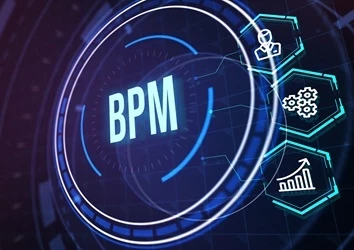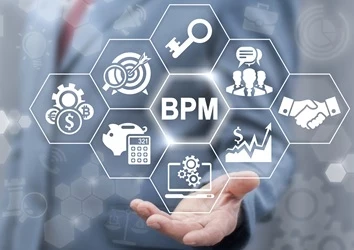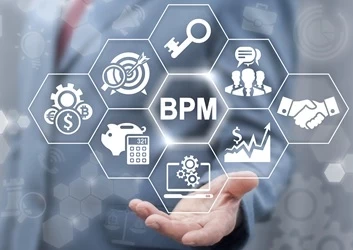"Right Design Right": A Design for Six Sigma Experience
Add bookmark
Why Chose a Design for Six Sigma Program
Whenever I attend Business Excellence or Business Improvement oriented conferences, I am amazed by the strong focus on Six Sigma and Lean Six Sigma contributions. Sure, I agree that in this time of financial recovery, all processes, whether in service, transactional or industrial business, need a critical analysis to optimize their efficiency and effectiveness. Savings can be realized, and by experience, Lean Six Sigma is indeed a suitable methodology for achieving them. I have worked for years with the DMAIC approach, and I will not dispute its usefulness.
However, I say, why stick with average or unexceptional existing products or services that your organization only improves when the need is dictated by the market? In order to cope with the latest economic situation, organizations must develop new products, processes and services, and they preferably do this right the first time. Our turbulent market conditions make it clear that existing processes sometimes need a radical change and are asking to be demolished and redesigned from the bottom-up.
That is where Design for Six Sigma (DFSS) begins, summarized by my credo, "Right Design Right."
"Defining the Right Design": The First Part of the Design for Six Sigma Journey
The rightfully called Identify phase in a DFSS program addresses the identification of customers’ needs, whether customers fall anywhere in the value chain or if they are ultimately the end users, the consumers. Identifying the Voice of the Customer is of underestimated importance. Before beginning the development engineering work of HOW to realize an innovation, be sure that what’s needed — the WHAT — is well defined, specific, and measurable. (I call this phase "Defining the Right Design.")
Phillips Electronics for example has made strides in tapping into the Voice of the Customer. Step by step the company is moving from a technology to a consumer-centric company, and the more we analyze the Voice of the Customer, the more we discover the limitations of our current level of insight into our customers’ real needs. We’ve made progress, but additional research is needed to gain deeper insights into how consumers are using our products, what they like or dislike about our products, and what performance levels do they expect from our products.
Ultimately, Philips’ consumer application research teams want to be able to translate emotional, subjective, and qualitative needs of customers into measurable quantitative parameters. Target levels for these parameters have to be specified, and measurement methods have to be known. These crucial parameters are called critical-to-quality parameters (CTQs).
[eventPDF]
And now ask yourself, up until what point is this approach common practice in your organization? Many DMAIC projects that I’ve seen published or presented base their CTQs on existing processes. The Right Design approach requires that the practitioner has an open mind, analyzes the past but does not copy oronly improve it. Design for Six Sigma requires the gathering of new CTQs based on new insights into customer and consumer needs. The translation from these qualitative needs to measurable quantitative parameters is an especially difficult but necessary process.
At Phillips Electronics we have implemented this approach, and while it adds additional time at the beginning of the product or service development process, it contributes tremendously to getting a result right the first time.
"Design Right": The Second Part of the Design for Six Sigma journey
Only after product, process or service needs are described in a quantitative way, and targets and specification limits are known, can a further flowdown to design parameters be made. This drives the two subsequent DFSS phases, Design and Optimize, summarized as "Design Right." At this point of the development process many of you will apply the method Failure Mode and Effect Analysis (FMEA). The Automotive Industry Action Group (AIAG) describes a failure mode as "not meeting the specifications." Therefore, this well known method also enforces the need of quantitatively-defined specifications to be able to execute an effective risk analysis.
Design Right means proposing concepts, executing risk analysis on concepts, and predicting the potential performance based on transfer functions, which describe the relationship between the needed CTQs (response) and the performance of underlying processes, modules and product parts (factors). I encourage you to spend at least 50 percent of test efforts on analysis testing to gain knowledge in predicting the performance of defined consumer-related CTQs.
In the Design Right phase, Design of Experiments (DOE) aims to create a transfer function that allows Monte Carlo simulations to predict CTQ performance, as opposed to how a DOE is executed in a DMAIC journey, where it reveals the parameters that most contribute to a known failure or non-performance mechanism. Design Right is all about prediction and risk management. When done right, a first time product, process and service will result.
"Right Design Right": theThird Part of the Design for Six Sigma Journey
After the above activities are completed, the last DFSS phase, Verify and Validate, takes place. From the"Right Design" point of view, consumer tests are executed to check whether customers’ needs are met. Results are expressed by a satisfaction score. From the "Design Right" point of view, subsystems, modules or part parameters (see Figure 1) are verified against technical specifications, and results are expressed in Cpk values. Verification testing cannot be omitted as the right balance with analysis testing must be found. (Click on image to enlarge.)
Figure 1
Anchoring Design for Six Sigma in an Organization
Within Phillips Electronics, Right Design Right started as a quality initiative on a per project basis, with a few projects in each business unit. The initiative has grown to an accepted way of working in all the Consumer Lifestyle Innovation centers of the company. Integrating Design for Six Sigma in our business creation processes has been a major milestone for us.
This is my experience and advice: Right Design Right (Design for Six Sigma) can only be deployed successfully if it becomes part of the business creation process. Black Belts and Green Belts have been and still are instrumental in assuring the ongoing application within our organization. Where DMAIC is applied, project by project, Design for Six Sigma and its tools and methods are an integral part of the product creation process for Phillips Electronics.
I have had had the opportunity to drive this program, which has saved the company 200 million euros. Customer returns have been reduced significantly. Net promoter scores have increased. Employees have changed their way of working. Right Design Right had definitely made a significant change in the DNA of the organization.
Two Black Belts, who were part of an early group of trainees and are now both in responsible management functions, can attest to the power of this approach:
"The Design for Six Sigma training radically changed my way of working, as I realized how critical it was to understand the consumer needs and embed them in our designs. It has been the start of an exciting journey in the quality function, deploying the consumer-driven mindset and tools in my organization."
"The Design for Six Sigma Black Belt program changed truly how I myself and the teams working on projects are making decisions and driving the quality first mindset. Starting from consumer insights we apply this data-driven approach always with the consumer in mind. Equipped with the necessary tools we started to train Green Belts on-site to spread this message throughout the organization. As an example we have been able to reduce the return rate for our system iron by 50 percent."
Why the Limited Attention for Design for Six Sigma?
I would like to invite you to comment on this question. Do you avoid Design for Six Sigma because you don’t have much time in the early phase of your product, service, or process development? Do any of these three have to be made available tomorrow? Is it about your organization’s lack of insight into the Voice of the Customer? Don’t you yet know what the consumer really appreciates and what his targeted specifications are? Is it about your organization’s lack of competency in predicting the performance of certain concepts, so it makes things first and then improves them when needed? Or is the Design for Six Sigma approach just not a part of your company culture?
I look forward to a fruitful discussion.




















